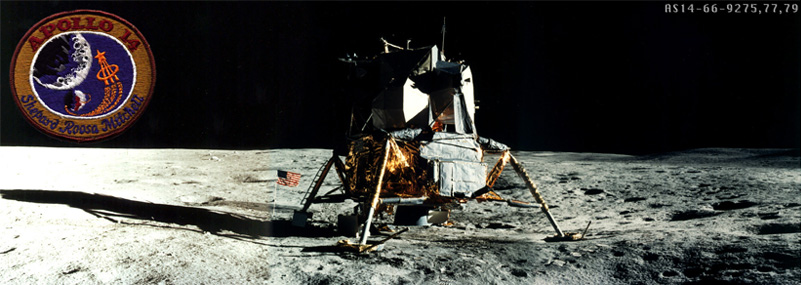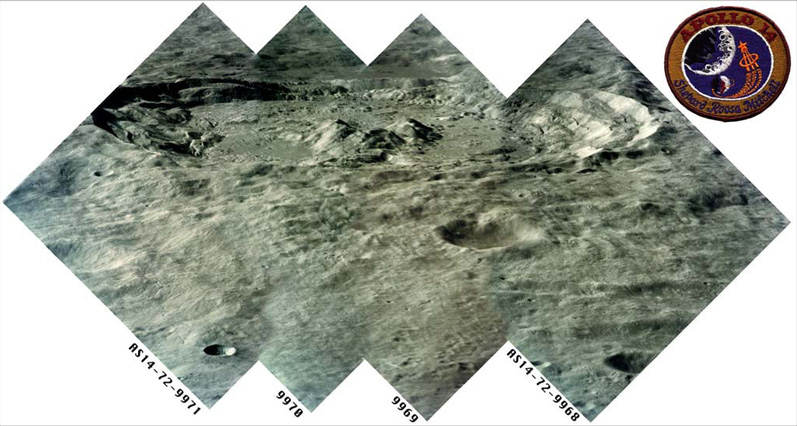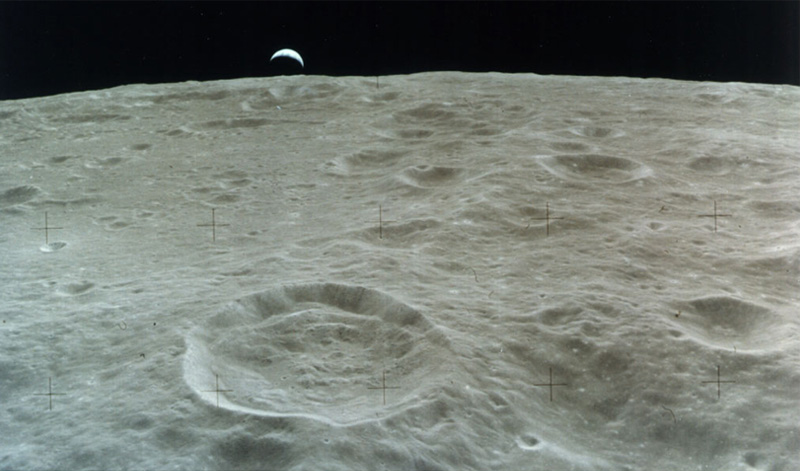Apollo 14

Launched on January 31, 1971, Apollo 14 was successful despite docking problems and other glitches that threatened the landing. It boasted color video images of the Moon and the first materials sciences experiments on the Moon during its two EVAs.
The astronauts for this third manned lunar landing were Alan Shepard, Stuart Roosa, and Edgar Mitchell. The lander touched down within 50 meters of its target point in the Fra Mauro highlands. On their first EVA they depolyed a solar wind composition experiment, the Laser Ranging Retro Reflector (LRRR) and the Apollo Lunar-Surace Experiments Package (ALSEP). On the second EVA they did a detailed exploration of a small crater called Cone Crater. They experienced about 3 km of travel in rocky terrain in the Moon's gravity which is 1/6 that of Earth.

A mosaic of King Crater
After liftoff, they crashed the lunar ascent stage into the lunar surface between the seismometers placed by Apollo 12 and Apollo 14. The resulting seismic signals lasted for an hour and a half and were detected by both instruments.

The images and text are extracted from the NASA sites, which may be consulted for more details.
Online references:
NASA's Apollo Program site
Apollo 14 Mission
Solar System Illustration
Solar System Concepts
Apollo Program
| HyperPhysics********** Astrophysics | R Nave |